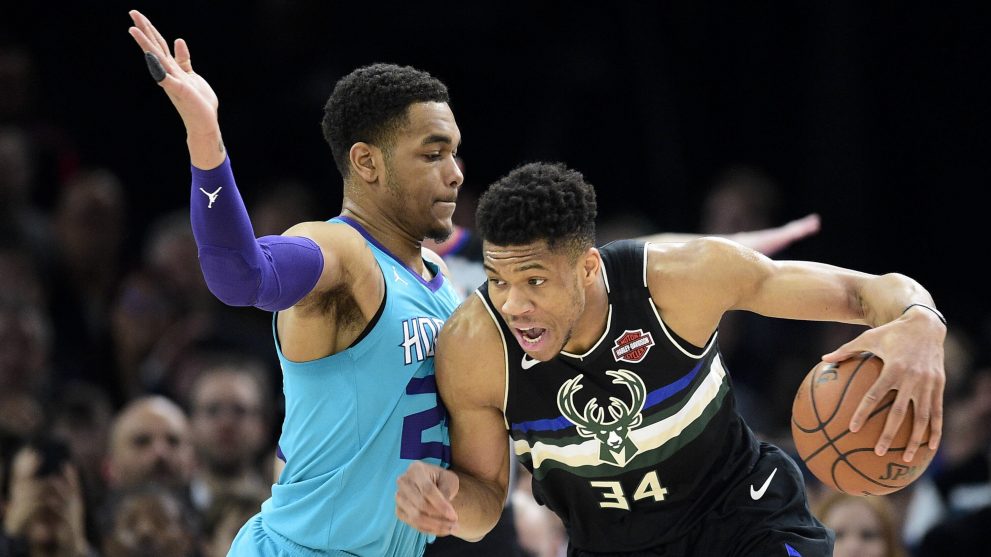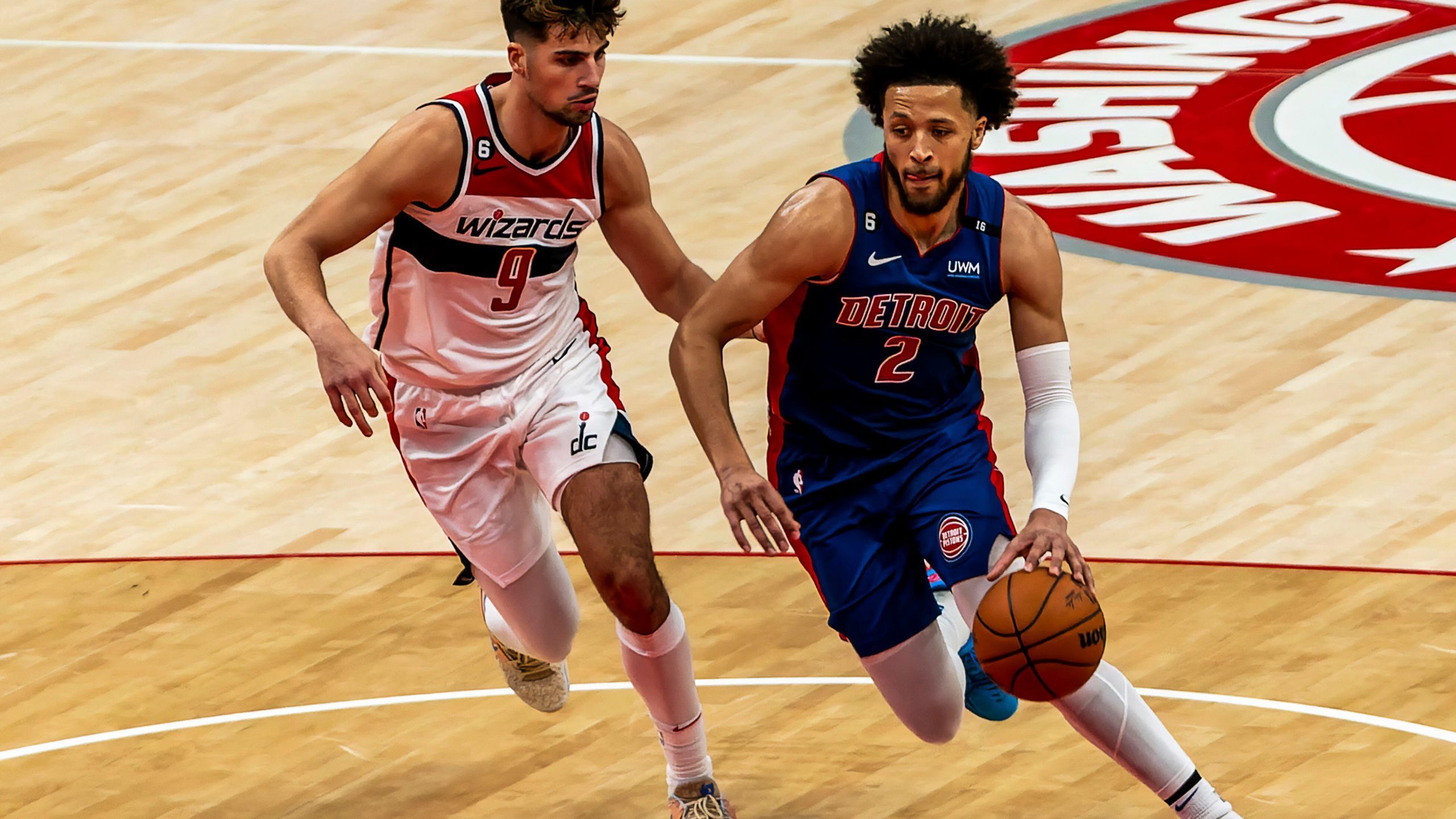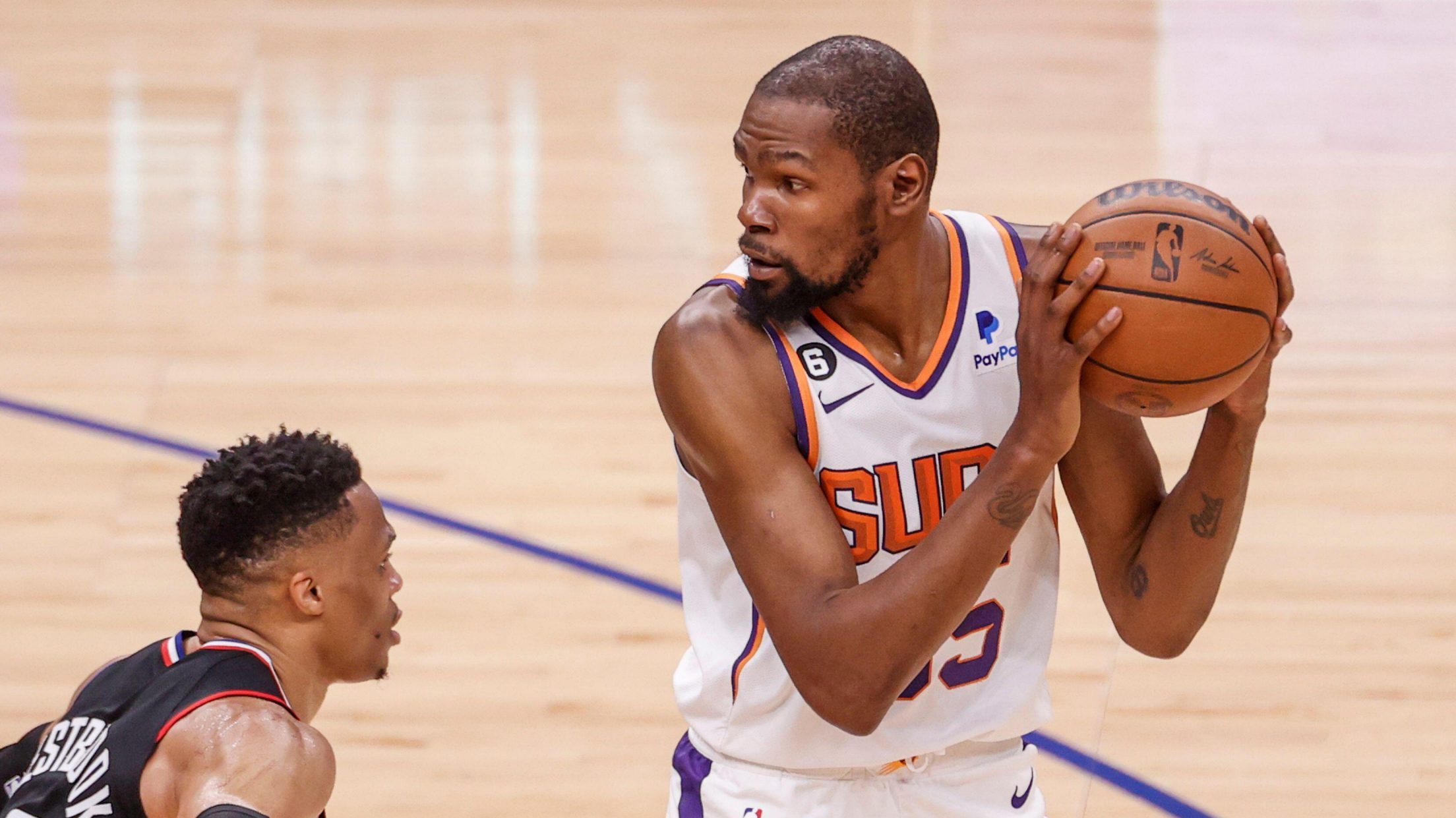Now in the early throes of August, the NBA free agency landscape is largely settled. Potential moves surrounding Damian Lillard and James Harden are omnipresent in basketball discourse, but another player and his off-season has captivated me of late.
Hornets’ restricted free agent forward P.J. Washington is one of the lone remaining players on the market who will command above the minimum. His free agency has intrigued for a multitude of reasons; this very much feels like a byproduct of how the cap is slated to increase.
This is another case of how wonky and backwards restricted free agency can be. Lastly, watching the back and forth on what P.J. is as a player, what he “should get” monetarily, and what his value is makes it worth diving in and parsing through his on-court exploits and growth.
Washington had the best season of his young career in 2022-23. Anytime there’s a player who ramps up usage, loses some efficiency, and it’s on a losing team, there’s typically a conflation of accumulating stats in a poor environment in relation to winning; that’s not the case with Washington.
All positions and archetypes in basketball have utility, have value; a primary ball-handler and creator that meets the thresholds of efficiency, defensive baseline, and consistency is vital. However, the 4 spot in pro basketball is the position that’s grown in value, and difficulty to find, the most over the past half decade.
- Shoot well on volume and with some versatility (off the dribble, screens, movement)
- Finish effectively around the basket
- Attack closeouts and be able to create your own shot off one or two dribbles, or move the ball after forcing defensive rotation
- Create easy/effective offense if provided a mismatch
- Be useful as a screener
- Don’t be a liability on the glass
- Effectively guard in multiple schemes while being able to guard the ball, guard screens (as the screener’s defender and ball-handler’s defender)
- Guard multiple positions and archetypes effectively, whether on a switch or by assignment
- Provide help defense at a high level as a secondary rim protector
That’s a lot to throw at you, but that’s the point. Being a 4, in many scenarios, is about concession. What can we succeed with? What can we take away? How can this player bolster us and hold up above water in other situations?
To be an effective 4 is really to be a player who can be a neutral to plus playing 3-5 in most scenarios, to me.
Lineups crater if a 4, the main help off point for defenses, cannot punish defenses for doing so. Lineups crater if a 4 cannot be just versatile enough defensively to keep defensive shape and solidity.
P.J. Washington crossed that threshold this past season to go from theoretically versatile, to actualized as a versatile player, and it can’t be undersold how huge that is.
Many players in the frontcourt have theoretical versatility, but the tricky part about versatility is how important consistency is to being versatile in practice, not just in ideology.
He played the highest percentage of minutes at the 4 in his career last season (95%) along with playing some minutes at the 3 and 5; for reference, over half of his minutes came at the 5 in 2021-22. He put up the highest usage of his career (20.6%) after his lowest the year prior (15.6%).
New (to P.J.) head coach Steve Clifford empowered Washington to handle the ball more, operate as a handoff and playmaking hub at times, and even run pick-and-roll. According to Synergy Sports, Washington ran 99 pick-and-rolls (including passes) in the 2022-23 season after running 45 in total his first three seasons in the league. His frequency on drives went up substantially.
Washington has always had a strong feel for the game and ability to make timely connective passes in the flow of an offense. Adding in more ability and opportunity to put the ball on the deck allowed him to showcase that passing ability with more variety.
Part of that seemed to be some additional shiftiness in his handle, but it largely felt like a concerted empowerment from the Hornets as a staff.
After some rockiness with efficiency early on in the year, understandable given LaMelo Ball was out for all but three games until mid-December, Washington found his groove.
From Christmas onward (41 games), Washington averaged 16.5 points, 5.0 rebounds, 2.4 assists and 2.1 combined steals and blocks. He shot 36.5% from deep on just over six attempts per game while maintaining a 56.7% true-shooting clip, right around league average.
He took advantage of quick post touches in a way he hadn’t been able to earlier on in the league, scoring .956 points per possession on roughly one post touch per game according to Synergy; He was at .75 ppp the year before (17th percentile compared to 51st). That seems like a marginal jump, but to add that extra ability to create adequate offense in a pinch that a defense needs to think about matters greatly.
Washington went from fairly strictly a play finisher to start his career with the Hornets, to a player who could start possessions, run secondary actions, pop, roll, function as an outlet scorer, attack switches with strength, cut off lanes that open up all at an average to above clip. Considering additional growth in his jumper, extending his threat off of screens, even pulling up from three at an above average clip on moderate volume, Washington turned theoretical versatility, into one of the more well-rounded consistent skillsets amongst 4’s in the NBA, with room still to polish.
On the defensive end is where Washington perhaps cemented himself the most this past season.
It’s easy to look at Charlotte’s 20th ranked defense from last season and tilt your head a bit at the above sentence. Yet, it’s worth pointing out how much the Hornets improved on that end this season (and how much their 30th-ranked offense skewed defensive numbers).
Per Cleaning the Glass, the Hornets had the 11th best defense in the NBA from the start of February to the end of the regular season, a 30-game sample. That roughly coincides with rookie lottery pick Mark Williams entering the starting lineup. With Williams and Washington sharing the court this season, the Hornets allowed 109.7 points per 100 possessions, ranked in the 92nd percentile in the league (That would have been the best defense in the league in that February onwards stretch, for reference).
Lineups featuring Dennis Smith Jr (who would have been worthy of All-Defense last year in my eyes) and Washington maintained a 108.2 defensive rating over an even larger sample.
PJ Washington team defense: Celtics run Ram pick-and-roll for Tatum with Rob Williams, Tatum rejects + draws help from McGowens at the nail — but PJ takes care of the weak-side. Runs both Pritchard and Williams off the line + recovers to block Grant from behind pic.twitter.com/TiFa4Ml57i
— Brian Geisinger (@bgeis_bird) January 17, 2023
It stands out how much more disciplined the Hornets, and particularly the starters, were in Steve Clifford’s system even if final statistics don’t paint the prettiest picture. Washington thrived, molding himself into an active helper, a much more consistent on-ball defender, and in turn became incredibly value to what Charlotte did defensively.
P.J. has always had the ability to put together stretches of solid defense on his rookie contract; this past year, those stretches became elongated, more fine-tuned, and frankly expected.
He became Charlotte’s go-to stopper against a multitude of bigger creators, as well as a vital late clock player they trusted to switch on any and all offensive threats.
If you’d told me prior to last season that P.J. would have some possessions like this defending James Harden, I would’ve been pleasantly surprised.
He excelled at making second and third efforts, a staple in higher levels of defense. His footwork and positioning to make things harder earlier in a possession stood out.
There were times earlier on in his pro career that he could get worked by larger players or get caught off-balance, and while that still happens from time to time, the consistency was vastly improved. Especially considering he’s a bit smaller as a 4/5 with a bigger wingspan and lower base, leveraging his strength and angles is essential in defending man up.
This clip speaks well and volumes about what he was able to do with respect to versatility last season, toggling across multiple positions and responsibilities in one possession.
The initial switch on a tough screening angle with Mark Williams to kill the drive. Good positioning to deny Rudy Gobert an immediate duck in. The communication and quick scram with Williams to hand one another’s matchups back off.
Great slide to cut off Kyle Anderson’s attempt to go inside and stifle another drive, before staying home on Anderson’s up fake. He tags up Gobert when Williams and Hayward contain baseline before jumping back out to Anderson on a short close. He squeezes the gap on the final ball screen as LaMelo Ball calls for the switch, then gives Conley the, what appears to be, open look before jutting out to tip the shot.
This is the goods.
The only significant critique I’d have of Washington as a defender is that I’d love to see him use his hands in tandem with his feet more. That’s what typically separates the capable from the lockdown.
He defended Paolo Banchero well at times during this game, but this is a showcase of that factor and the difference it could make.
All it takes is half a wrong step, and a player with Banchero’s burst and craft is getting into the paint. Washington can get away more with using his chest to ward off and recovering with length when he has the baseline to his side, but in the middle of the floor, finding a way to get more handy without fouling could help him pivot to an even higher level of defense.
He often doesn’t meet his man first at the point of attack, which isn’t inherently a bad thing, but against some of the best and most explosive creators in the league, finding some extra wiggle room with physicality could prove beneficial.
Washington already took the steps this past season to develop into a legitimately versatile frontcourt player for the Hornets, while still having a wealth of room to grow outwards. It seems likely that he’ll be back in Charlotte next season given how restricted free agency tends to play out, but it’s worth pointing out that he’s on track to become one of the brighter young role players in the league, a solid starter at a remarkably hard position to establish that notion.
With even more skill development and honing, I wouldn’t rule out P.J. Washington having a sub-All-Star level impact as he works into his prime.







